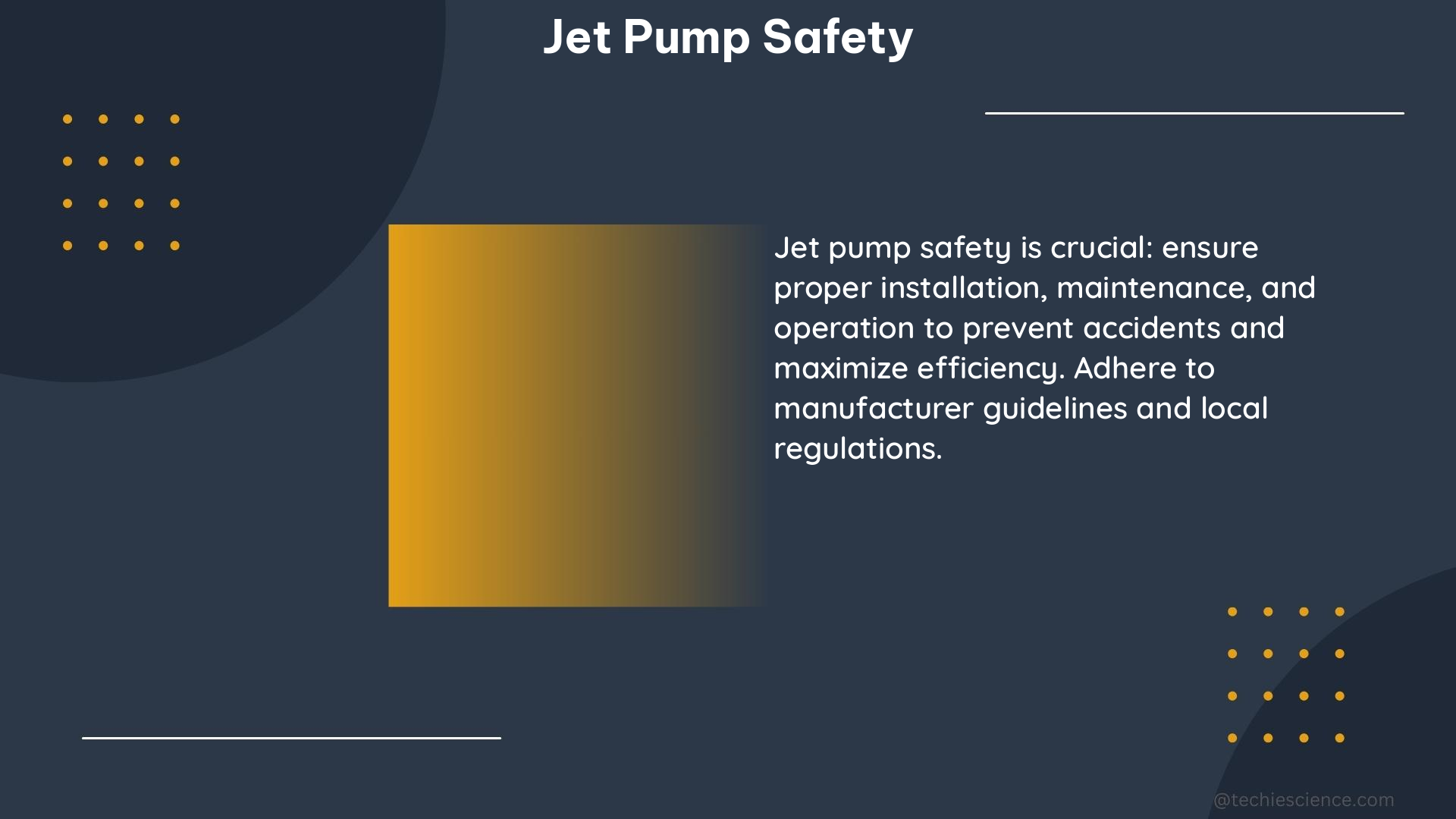Jet pumps are widely used in various industries, including chemical, environmental treatment, civil engineering, agriculture, mining, and mechanical engineering, due to their versatility and efficiency. However, ensuring the safety of these devices is of paramount importance to prevent potential hazards and protect operators. This comprehensive guide delves into the critical aspects of jet pump safety, providing a detailed roadmap for maintaining optimal performance and safeguarding personnel.
Monitoring Operating Parameters: The Key to Mitigating Pressure Drop Risks
One of the primary safety concerns with jet pumps is the pressure drop, or energy loss, which can lead to equipment damage and pose a significant risk to operators. To mitigate this risk, it is essential to closely monitor the inlet pressure, outlet pressure, and flow rate of the pump, ensuring they remain within the safe operating limits.
Table 1 outlines the parameters of the experimental measuring instruments used to monitor the pressure and flow rate of the jet pump:
| Instrument | Test Range | Precision |
|---|---|---|
| Data Collector | 0-5 V | ±0.01 V |
| Flow Meter | 0-100 L/min | ±0.5% |
| Pressure Sensor (Inlet) | 0-2.5 MPa | ±0.30 MPa |
| Pressure Sensor (Outlet) | 0-2.5 MPa | ±0.30 MPa |
These high-precision instruments allow for accurate measurement of the critical operating parameters, enabling operators to identify and address any deviations from the safe operating envelope.
Proper Installation and Maintenance: Ensuring Longevity and Safety

In addition to monitoring the operating parameters, it is crucial to ensure that the jet pump is correctly installed and maintained. Proper installation, including alignment, piping, and electrical connections, can significantly impact the pump’s performance and safety. Regular inspections and maintenance, such as checking for wear and tear, cleaning, and lubrication, can help identify potential safety issues before they escalate into serious problems.
Training and Education: Empowering Operators for Safe Jet Pump Operation
The study highlights the importance of training and education in jet pump safety. Providing comprehensive training to operators can help them understand the potential hazards associated with jet pumps and equip them with the knowledge and skills necessary to operate these devices safely. Measuring the effectiveness of training programs and setting goals for continuous improvement can ensure that operators maintain the required competence and confidence in handling jet pumps.
Quantifiable Data for Jet Pump Safety
The study provides the following quantifiable data points related to jet pump safety:
- Pressure Sensor Precision: ±0.30 MPa
- Flow Meter Precision: ±0.5%
- Inlet Pressure Range: 0-2.5 MPa
- Outlet Pressure Range: 0-2.5 MPa
- Critical Pressure Ratio for Optimal Area Ratio: 0.8
- Critical Flow Ratio for Optimal Area Ratio: 1.4%
These data points serve as benchmarks for operators and maintenance personnel to ensure the jet pump is operating within the safe and optimal parameters.
Comprehensive Approach to Jet Pump Safety
Ensuring the safety of jet pumps requires a comprehensive approach that encompasses monitoring operating parameters, proper installation and maintenance, and effective training and education. By identifying measurable safety goals and implementing safety measures that go beyond regulatory compliance, operators and organizations can ensure the safe and efficient operation of jet pumps in a variety of industrial applications.
Conclusion
Jet pump safety is a critical aspect of industrial operations, and this comprehensive guide provides a detailed roadmap for maintaining optimal performance and safeguarding personnel. By closely monitoring operating parameters, ensuring proper installation and maintenance, and empowering operators through training and education, organizations can mitigate the risks associated with jet pumps and foster a culture of safety that extends throughout their operations.
References:
- Identifying Measurable Safety Goals. (n.d.). Retrieved from https://www.dir.ca.gov/dosh/cal_vpp/best_practices_symposiums/goals.pdf
- Research on the Law of Head Loss of Jet Pumps in the Cavitation. (2022, April 6). Retrieved from https://www.ncbi.nlm.nih.gov/pmc/articles/PMC9025994/
- Study on improving liquid carrying performance of annular jet pump gas well with static mixer. (2023, November 9). Retrieved from https://onlinelibrary.wiley.com/doi/full/10.1002/ese3.1617
- Jet Pump NPSHr Data 4 – Eng-Tips. (2023, February 7). Retrieved from https://www.eng-tips.com/viewthread.cfm?qid=502163
- Experimental investigation on liquid absorption of jet pump under operating limits. (n.d.). Retrieved from https://www.researchgate.net/publication/272102015_Experimental_investigation_on_liquid_absorption_of_jet_pump_under_operating_limits

The lambdageeks.com Core SME Team is a group of experienced subject matter experts from diverse scientific and technical fields including Physics, Chemistry, Technology,Electronics & Electrical Engineering, Automotive, Mechanical Engineering. Our team collaborates to create high-quality, well-researched articles on a wide range of science and technology topics for the lambdageeks.com website.
All Our Senior SME are having more than 7 Years of experience in the respective fields . They are either Working Industry Professionals or assocaited With different Universities. Refer Our Authors Page to get to know About our Core SMEs.